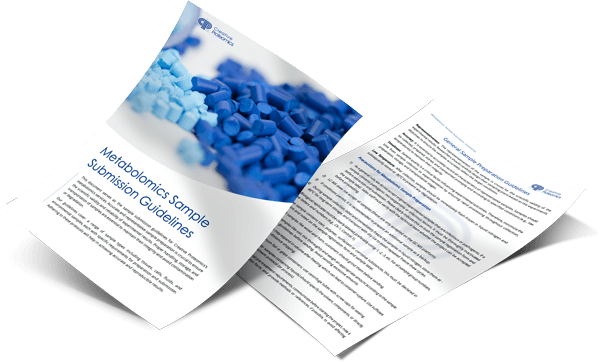- Service Details
- Case Study
What are Organic acids
Organic acids are defined as organic compounds with acidic properties. Because these acids are organic, their structure must contain a carbon atom. Carboxylic acid, with the molecular formula as RCOOH, is one of the most common organic acids. Sulfonic acid and alcohol are also organic acids. Generally speaking, organic acids are weak acids, which can only partially ionize in solution. Organic acids are widely used in food industry. For example, citric acid is widely used in sodas and canned tomatoes and acetic acid is well known organic acid used for making vinegar. Organic acids are also as additives in pharmaceutical production, leather tanning.

Organic acids are the result of incomplete oxidation of photosynthetic assimilates. They can go through terminal oxidation and yield CO2 and H2O. Their carbon skeletons can also be used for the raw materials of biosynthesis of carbohydrates or amino acids. Because organic acids are the intermediate products of complete oxidation, they paly an important role in redox balance maintenance, generation and consumption of ATP, and sustaining protonic and ionic gradients on membranes.
Organic acids play a vital role in the primary metabolism of plant. They are involved in the essential physiological pathways such as TCA cycle, glyoxylate cycle, and C3-, C4- and CAM-photosynthesis. Organic acids can be converted to each other in many plant tissues and they can also be the degradation products of more reduced compounds. Organic acids like lactate, fumarate, malate, and citrate, takes part in many vital cellular processes, pH regulation, stomatal function, aluminum tolerance, phosphorous acquisition, temporary carbon storage and communication with microorganisms. Besides regulating the primary and specialized metabolic pathways, organic acids also involve with the regulation of the development and growth of plant. For example, they act as signaling molecules, as modulators for many key enzymes or as regulators of gene expression.
Organic acids widely exist in foods and beverages, and partially or totally contribute to the taste and aroma of the product. Organic acids can not only being generated in foods spontaneously, but also produced during food processing such as alcoholic fermentation. The profiling as well as their quantification of organic acids in fruits, cheeses, and various beverages assists in determining the quality and authenticity of the product.
Targeted Organic Acid Detection Service
Creative Proteomics has established an organic acid analysis method based on the GC-MS/MS platform, allowing for absolute qualitative and quantitative detection of 100 organic acids. This product employs the industry-recognized gold standard method for qualitative and quantitative analysis, which utilizes SRM scanning mode along with accompanying standard curves, ensuring high sensitivity, strong specificity, and excellent reproducibility in both absolute qualitative and quantitative results.
The analysis encompasses organic acids related to various metabolic pathways, including those associated with the TCA cycle, sugars, amino acids, and fatty acids. Notable examples include salicylic acid, ellagic acid, and phenylpyruvic acid involved in the synthesis of plant secondary metabolites; canine uracil, xanthine, and taurine associated with amino acid metabolism; and methylhydroxybutyric acid, cholic acid, and taurine cholic acid related to fatty acid metabolism. In total, more than 100 metabolites are examined across 109 metabolic pathways (based on the KEGG database), providing high-quality analytical services for the fields of biological and clinical metabolism. This platform is ideal for research in amino acids, fatty acid, sugar intermediate metabolism, and related biological studies.
| Partial Organic Acids Quantified in Our Service | ||
|---|---|---|
| 1H-Indole-3-acetic acid | 2-amino-benzoic acid | 2-Furoylglycine |
| 2-Hydroxy-2-methylbutyric acid | 2-Hydroxybenzoic acid (salicylic acid) | 2-Hydroxyglutaric acid |
| 2-Hydroxyisovaleric Acid | 2-Indolecarboxylic acid | 2-Methylsuccinic acid |
| 2-hydroxybutyric acid | 2-hydroxy-3-methylvaleric acid | 5-hydroxyhexanoic acid |
| 2,4-dihydroxybutanoic acid | 2-methylmalic acid | 3-phenyllactic acid |
| 2-hydroxyadipic acid | 4-hydroxymandelic Acid | 3,4-dihydroxy-Phenylpropanoic acid |
| 3,4-Dihydroxyphenylacetic acid | 3-(3-Hydroxyphenyl) propanoic acid | 3-Hydroxybutyric acid |
| 3-Hydroxyisovaleric acid | 3-Hydroxymethylglutaric acid | 3-Methyladipic acid |
| 3-Methylglutaconic acid | 4-Deoxythreonate | 4-Hydroxyhippuric acid |
| 5-Hydroxyindoleacetic acid | Adipic acid | alpha-Hydroxylsobutyric acid |
| Benzenepropanoic acid | Benzoic acid | beta-Lactate |
| Citric acid | Dodecadioic acid (Lauric acid) | Cinnamic acid |
| Ethylmalonic acid | Fumaric acid | Glutaconic acid |
| Glutaric acid | Hexadecanoic acid (Palmitic acid) | Hippuric acid |
| Homovanillic acid | HPHPA | Hydroxyphenyllactic acid |
| Indolelactic acid | Kynurenic acid | L-Malic acid |
| Lactic acid | Levulinic acid | m-Coumaric acid |
| m-Hydroxyhippuric acid | m-Hydroxyphenylacetic acid | Malonic acid |
| Mevalonolactone | Methylmaleic acid (citraconic acid) | Methylmalonic acid |
| Organic Acid | o-Hydroxyphenylacetic acid | Octadecanoic acid (Stearic acid) |
| Oxoglutaric acid | p-Hydroxybenzoic acid | p-Hydroxyphenylacetic acid |
| Phenaceturic acid | Phenylacetic acid | Pimelic acid |
| Pyroglutamic acid | Pyruvic acid | Quinolinic acid |
| Sebacic acid | Suberic acid | Succinic acid |
| Sumiki's acid | Aconitic acid | Ferulic acid |
| Vanillylmandelic acid | Oxalic Acid Analysis | Tartaric Acid |
| Quinic Acid | Shikimic Acid | Acetic Acid |
| α-ketoglutaric Acid | Glyoxylic Acid | Isoferulic Acid |
| Glycolic Acid | Formic Acid | Propanoic Acid |
| Butyric Acid | Isobutyric Acid | Valeric Acid |
| Isovaleric Acid | Maleic Acid | |
Our Service Advantages
Broad Applicability:
Our organic acid analysis service is applicable to a wide range of biological samples as organic acids are commonly found in living organisms. This versatile analysis can be employed in various research areas. For instance, it can be used in the livestock industry to evaluate the gut health of animals through organic acid analysis. In aquaculture, the addition of organic acids like citric acid can promote the growth of aquatic organisms such as grass carp. In forestry, the assessment of organic acid content can be used to evaluate the quality of fruits like grapes. In the field of clinical medicine, there are reports linking certain diseases to organic acids. Even in the environmental domain, our service can be utilized for the analysis of organic acids in soil and water.
Comprehensive Coverage:
Based on KEGG annotation results, we have organized the metabolic pathways of organic acids, centered around the TCA cycle. This encompasses aromatic amino acid metabolism, including tyrosine metabolism and phenylalanine biosynthesis, as well as lipid-related metabolism, such as methylhydroxybutyric acid pathways and bile acid metabolism. Additionally, we have included coenzyme-related substance metabolism, such as niacin and nicotinamide metabolism.
The table below shows some of the 67 indicators involved in KEGG pathways (partial list).
| Metabolic Pathway Name |
|---|
| Metabolic pathways |
| Microbial metabolism in diverse environments |
| Biosynthesis of secondary metabolites |
| Biosynthesis of plant secondary metabolites |
| Biosynthesis of phenylpropanoids |
| Biosynthesis of plant hormones |
| Degradation of aromatic compounds |
| Glyoxylate and dicarboxylate metabolism |
| Biosynthesis of alkaloids derived from ornithine, lysine, and nicotinic acid |
| Biosynthesis of cofactors |
| Biosynthesis of terpenoids and steroids |
| Biosynthesis of alkaloids derived from shikimate pathway |
| One Carbon metabolism |
| 2-Oxocarboxylic acid metabolism |
| Biosynthesis of amino acids |
| Citrate cycle (TCA cycle) |
| Tyrosine metabolism |
| Carbon fixation pathways in prokaryotes |
| Biosynthesis of alkaloids derived from histidine and purine |
| Biosynthesis of alkaloids derived from terpenoid and polyketide |
| Central carbon metabolism in cancer |
| Phenylalanine metabolism |
| Bile secretion |
Results with Guaranteed Accuracy:
Our approach relies on the Sciex QTRAP 6500+ LCMS/MS platform and incorporates several isotopic internal standards to facilitate calibration. Data acquisition is carried out using the multiple reaction monitoring (MRM) mode. Stringent adherence to methodological criteria ensures both the stability and precision of our method.
High Sensitivity:
The methodology demonstrates exceptional sensitivity, achieving detection limits for certain substances as low as 0.125 ng/mL. This heightened sensitivity is attributed to a sample pre-processing step involving derivatization, a process that notably enhances the chromatographic and mass spectrometric characteristics of the target compounds. Furthermore, derivatization increases the molecular weight of the target compounds, facilitating their effective separation from the matrix and mitigating the influence of background noise.
Sample requirement
Serum and Plasma: 0.2 mL/sample; preservation at -80°C with rapid freezing in liquid nitrogen, shipping on dry ice. Please avoid hemolysis.
Urine: 0.5 mL/sample; preservation at -80°C with rapid freezing in liquid nitrogen, shipping on dry ice.
Tissue: 0.1 g/sample; preservation at -80°C with rapid freezing in liquid nitrogen, shipping on dry ice.
Feces and Intestinal Contents: 0.1 g/sample; preservation at -80°C with rapid freezing in liquid nitrogen, shipping on dry ice.
Cells: ≥1x10^7/sample; preservation at -80°C with rapid freezing in liquid nitrogen, shipping on dry ice.
Itaconate and itaconate derivatives target JAK1 to suppress alternative activation of macrophages[1]
Journal: Cell Metabolism
Impact Factor: 31.373
Published: 2022
Metabolites derived from the Krebs cycle, itaconic acid and its derivatives, can inhibit inflammatory responses in pro-inflammatory "M1" macrophages. However, alternatively activated "M2" macrophages are known to uptake itaconic acid. Consequently, the authors investigated the effects of itaconic acid and 4-octyl itaconic acid (OI) on the activation of M2 macrophages and demonstrated that itaconic acid and OI inhibit M2 polarization and metabolic reprogramming. Examination of IL-4 signaling revealed that both itaconic acid and OI suppress the phosphorylation of JAK1 and STAT6. OI-mediated inhibition was also observed in response to IL-13, interferon-β, and interferon-γ in macrophages and Th2 cells, thereby affecting JAK1 activation. Importantly, itaconic acid derivatives directly modified JAK1 at multiple residues, and both itaconic acid and OI inhibited the kinase activity of JAK1. Consequently, the authors have identified itaconic acid and OI as JAK1 inhibitors and propose a novel strategy to inhibit JAK1 in diseases driven by M2 macrophages.

Itaconate is a lysosomal inducer that promotes antibacterial innate immunity[2]
Journal: Molecular Cell
Impact Factor: 19.328
Published: 2022
Lysosomes are the primary organelles in macrophages responsible for killing invading bacteria. However, the precise mechanism underlying lysosome biogenesis during bacterial infection remains unclear. In this study, the authors demonstrated that LPS stimulation increases the production of IRG1-dependent itaconic acid, which promotes lysosome biogenesis by activating the transcription factor TFEB. Itaconic acid mechanistically alkylates TFEB at cysteine 212 (Cys270 in mice), inducing its nuclear localization by antagonizing mTOR-mediated phosphorylation and cytoplasmic retention. Functionally, the elimination of itaconic acid synthesis through IRG1/Irg1 knockout or expression of alkylated TFEB mutants with defects impairs the antibacterial capacity of macrophages in vitro. Furthermore, mice carrying alkylated TFEB mutants exhibit increased susceptibility to Salmonella infection, while in vivo treatment with cell-permeable itaconic acid derivative OI limits inflammation. The study identifies itaconic acid as an endogenous metabolite that acts as a lysosome-inducing factor in response to bacterial infection in macrophages, suggesting potential therapeutic utility of itaconic acid in the treatment of human bacterial infections.

References
- Marah C Runtsch, Stefano Angiari, Alexander Hooftman, et al. Itaconate and itaconate derivatives target JAK1 to suppress alternative activation of macrophages . Cell Metabolism, 2022, 34(3):487-501.
- Zhenxing Zhang, Chao Chen, Fan Yang, et al. Itaconate is a lysosomal inducer that promotes antibacterial innate immunity. Molecular Cell, 2022, 82(15):2844-2857.







